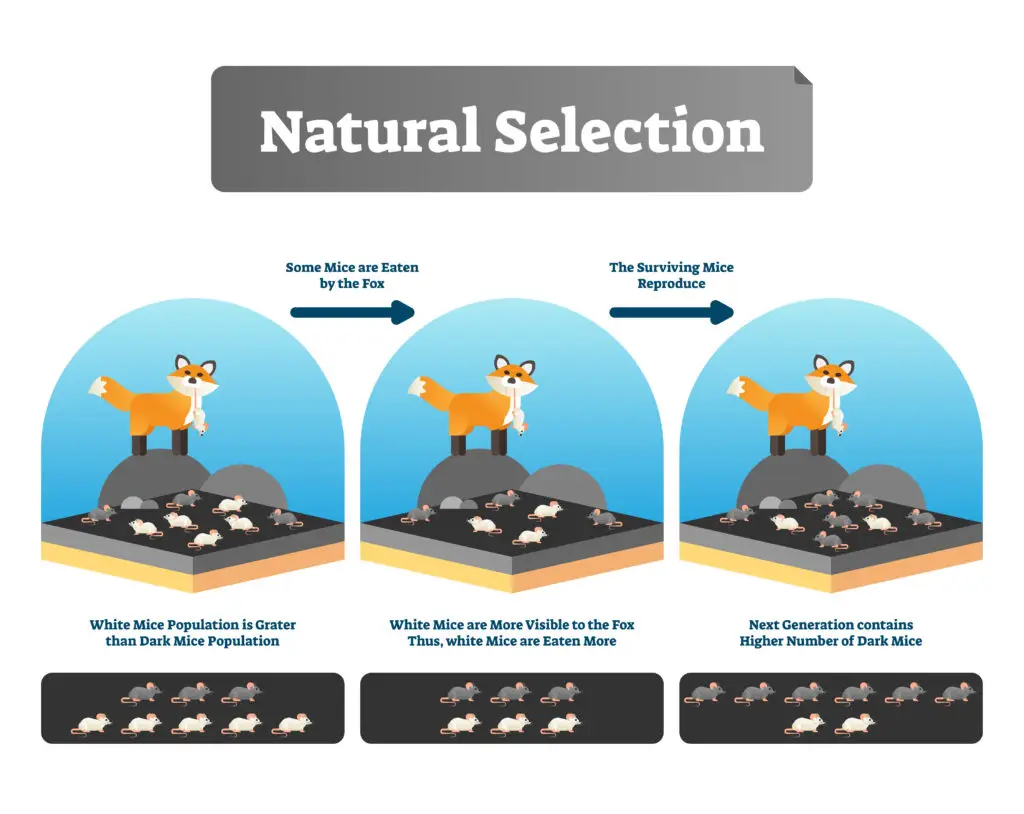Natural Selection
What is Natural Selection?
Natural selection is the process by which certain traits become more common in a population due to those traits providing a survival or reproductive advantage. In natural selection, organisms better adapted to their environment tend to survive and reproduce, passing on advantageous traits.
Examples of Natural Selection
Natural selection is a process where traits that help living things survive become more common over time. Here are some examples to make it easier to understand:
One example is peppered moths. Before the Industrial Revolution in England, most peppered moths were light-colored, which helped them blend in with light-colored trees and avoid predators. However, as pollution darkened the trees, darker moths blended in better and survived more often. Over time, the dark-colored moths became more common.
Another example is giraffes and their long necks. Long ago, giraffes may have had shorter necks. But when food was harder to reach, giraffes with slightly longer necks could reach more leaves on tall trees. These giraffes survived better and had more babies, and eventually, long necks became a common trait.
Antibiotic resistance in bacteria is another good example. When people use antibiotics to kill bacteria, some bacteria might survive because they have a natural resistance to the medicine. These resistant bacteria then multiply, making it harder to treat infections with the same antibiotics.
Finally, think of finches on the Galápagos Islands, studied by Charles Darwin. Finches with different beak shapes adapted to different food sources on the islands. For instance, finches with strong, thick beaks could crack seeds, while finches with long, thin beaks could pick insects from trees. Each beak shape helped the birds survive based on the food available in their environment.
In all these examples, traits that helped living things survive and reproduce became more common over time. This is natural selection at work!
Effect on Human Populations
Natural selection has shaped human populations in different ways over thousands of years. It has helped people adapt to their environments and survive better.
For example, in areas with high levels of sunlight, natural selection favored people with darker skin. Darker skin has more melanin, which protects against the sun’s harmful rays. This adaptation helped people living in sunny areas avoid skin damage and survive better.
In colder regions, natural selection favored people with traits that help keep warmth. Some people in these regions have more body fat or shorter limbs, which helps them conserve heat. These traits helped early humans survive in freezing temperatures.
Lactose tolerance is another example. Originally, most people couldn’t digest lactose, a sugar in milk, after childhood. But in areas where people relied on dairy farming, natural selection favored those who could digest milk. Today, many people in these regions can drink milk without problems.
Finally, disease resistance is a big effect of natural selection on humans. In places where malaria is common, people with a certain gene (the sickle cell gene) had a better chance of surviving. Although the sickle cell gene can cause health issues, it also provides some protection against malaria, helping people survive in areas with this disease.
These examples show how natural selection helped human populations adapt to different environments. Over time, it led to traits that made survival easier in each unique place.
